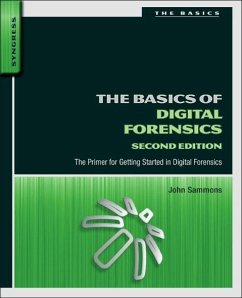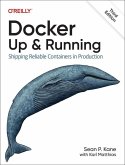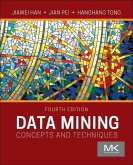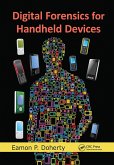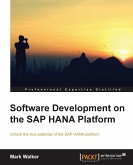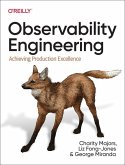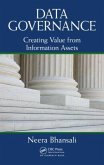John Sammons (Associate Professor and Director of the Digital Foren
The Basics of Digital Forensics
The Primer for Getting Started in Digital Forensics
28,99 €
inkl. MwSt.
Versandfertig in über 4 Wochen

14 °P sammeln
John Sammons (Associate Professor and Director of the Digital Foren
The Basics of Digital Forensics
The Primer for Getting Started in Digital Forensics
- Broschiertes Buch
- Merkliste
- Auf die Merkliste
- Bewerten Bewerten
- Teilen
- Produkt teilen
- Produkterinnerung
- Produkterinnerung
2nd edition.
Andere Kunden interessierten sich auch für
![I Found It on the Internet I Found It on the Internet]() Frances Jacobson HarrisI Found It on the Internet54,99 €
Frances Jacobson HarrisI Found It on the Internet54,99 €![Docker: Up & Running Docker: Up & Running]() Sean P. KaneDocker: Up & Running43,99 €
Sean P. KaneDocker: Up & Running43,99 €![Data Mining Data Mining]() Jiawei Han (Department of Computer ScienceUniversity of ProfessorData Mining95,99 €
Jiawei Han (Department of Computer ScienceUniversity of ProfessorData Mining95,99 €![Digital Forensics for Handheld Devices Digital Forensics for Handheld Devices]() Eamon P. Doherty (Montclair State University, New Jersey, USA)Digital Forensics for Handheld Devices89,99 €
Eamon P. Doherty (Montclair State University, New Jersey, USA)Digital Forensics for Handheld Devices89,99 €![Software Development on the SAP Hana Platform Software Development on the SAP Hana Platform]() Mark WalkerSoftware Development on the SAP Hana Platform65,99 €
Mark WalkerSoftware Development on the SAP Hana Platform65,99 €![Observability Engineering Observability Engineering]() Charity MajorsObservability Engineering43,99 €
Charity MajorsObservability Engineering43,99 €![Data Governance Data Governance]() Data Governance104,99 €
Data Governance104,99 €-
-
-
2nd edition.
Hinweis: Dieser Artikel kann nur an eine deutsche Lieferadresse ausgeliefert werden.
Hinweis: Dieser Artikel kann nur an eine deutsche Lieferadresse ausgeliefert werden.
Produktdetails
- Produktdetails
- Verlag: Syngress Media, U.S.
- 2 ed
- Seitenzahl: 200
- Erscheinungstermin: 15. Dezember 2014
- Englisch
- Abmessung: 231mm x 186mm x 12mm
- Gewicht: 414g
- ISBN-13: 9780128016350
- ISBN-10: 0128016353
- Artikelnr.: 41152420
- Herstellerkennzeichnung
- Libri GmbH
- Europaallee 1
- 36244 Bad Hersfeld
- gpsr@libri.de
- Verlag: Syngress Media, U.S.
- 2 ed
- Seitenzahl: 200
- Erscheinungstermin: 15. Dezember 2014
- Englisch
- Abmessung: 231mm x 186mm x 12mm
- Gewicht: 414g
- ISBN-13: 9780128016350
- ISBN-10: 0128016353
- Artikelnr.: 41152420
- Herstellerkennzeichnung
- Libri GmbH
- Europaallee 1
- 36244 Bad Hersfeld
- gpsr@libri.de
John Sammons is a distinguished scholar and educator in digital forensics, currently serving as a Professor at Marshall University and Associate Director of the Institute for Cyber Security. With a background as a Huntington Police officer, he has been recognized for his investigative work by the U.S. Department of Justice. He is the author and co-author of several notable books, including the acclaimed "The Basics of Digital Forensics," which was nominated for Digital Forensics Book of the Year in 2013. John also contributed to the digital forensics chapter of Douglas Ubelaker's "Forensic Science: Current Issues, Future Directions." In addition to his academic roles, he is the Fusion Center Liaison Officer for the West Virginia Intelligence Fusion Center and founded the Appalachian Institute of Digital Evidence, a non-profit focused on research and training in digital evidence. John holds multiple certifications and is a member of several professional organizations, including the American Academy of Forensic Sciences and the FBI Infragard. Before joining Marshall, he co-founded Second Creek Technologies, a digital forensics firm. He also teaches advanced digital forensics and firearms to graduate students and provides training for legal and law enforcement professionals.
1. Introduction
2. Key Technical Concepts
3. Labs and Tools
4. Collecting Evidence
5. Windows System Artifacts
6. Anti-Forensics
7. Legal Considerations
8. Internet and E-mail
9. Network Forensics and Incident Response
10. Mobile Device Forensics
11. Looking Ahead: Challenges and Concerns
12. Electronic Discovery
Appendix A. Online Resources
Appendix B. Sample Documents
Appendix C. Further Reading
2. Key Technical Concepts
3. Labs and Tools
4. Collecting Evidence
5. Windows System Artifacts
6. Anti-Forensics
7. Legal Considerations
8. Internet and E-mail
9. Network Forensics and Incident Response
10. Mobile Device Forensics
11. Looking Ahead: Challenges and Concerns
12. Electronic Discovery
Appendix A. Online Resources
Appendix B. Sample Documents
Appendix C. Further Reading
1. Introduction
2. Key Technical Concepts
3. Labs and Tools
4. Collecting Evidence
5. Windows System Artifacts
6. Anti-Forensics
7. Legal Considerations
8. Internet and E-mail
9. Network Forensics and Incident Response
10. Mobile Device Forensics
11. Looking Ahead: Challenges and Concerns
12. Electronic Discovery
Appendix A. Online Resources
Appendix B. Sample Documents
Appendix C. Further Reading
2. Key Technical Concepts
3. Labs and Tools
4. Collecting Evidence
5. Windows System Artifacts
6. Anti-Forensics
7. Legal Considerations
8. Internet and E-mail
9. Network Forensics and Incident Response
10. Mobile Device Forensics
11. Looking Ahead: Challenges and Concerns
12. Electronic Discovery
Appendix A. Online Resources
Appendix B. Sample Documents
Appendix C. Further Reading
